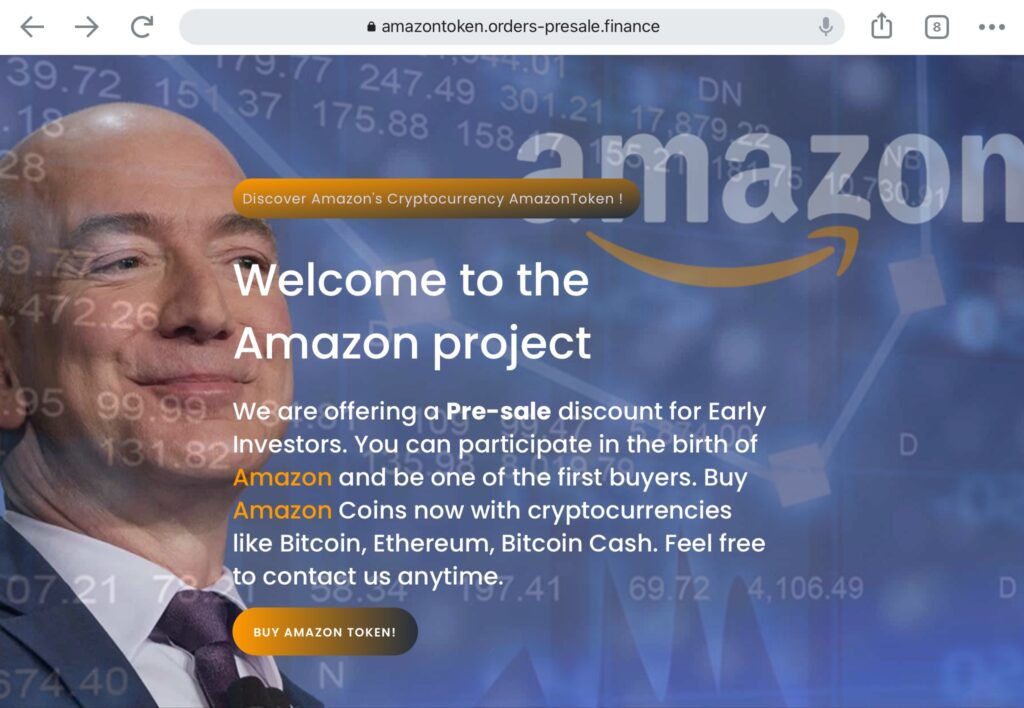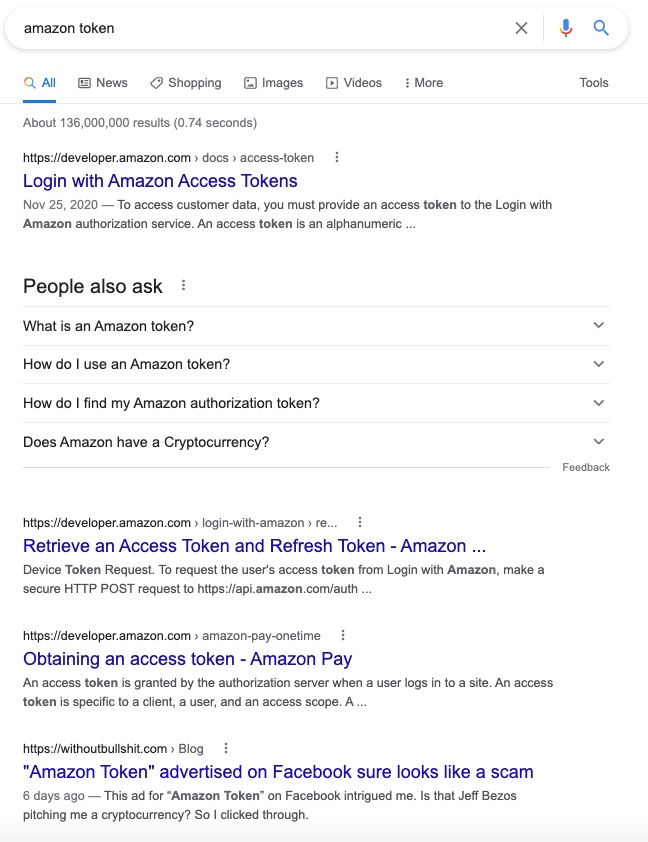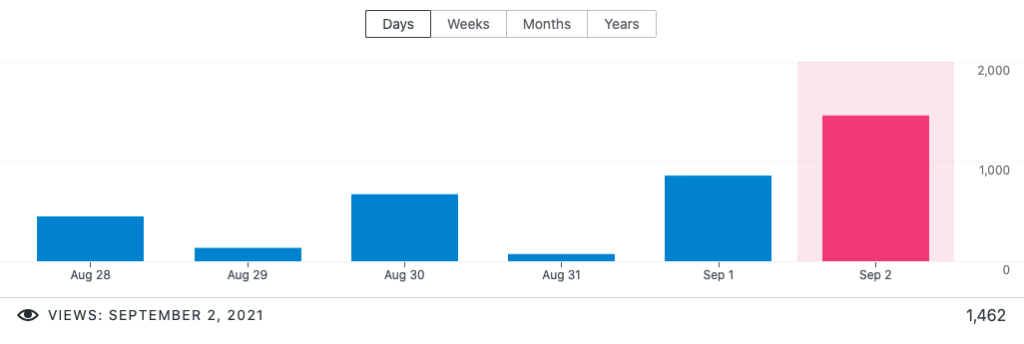Amazon Token crypto scam: capturing traffic with timely SEO

Last week I posted about the Amazon Token crypto scam advertised on Facebook. That post received 4,000 views in six days, which is about eight times my usual traffic for a new post, and shows no sign of stopping. Here’s what made it take off.
A deliberate move to capture traffic through SEO
As soon as I saw the Amazon Token ad on Facebook, I knew a lot of people would be curious about it. Although it was convincing on the surface, a few minutes study showed it was bogus. I thought, “This is something people need to know about, because it’s perfectly designed for crypto suckers.”
So, what do you do if you want lots of people to see a post like this?
- Pick a topic of urgent interest. If you’re tempted to invest cryptocurrency based on a Facebook ad, wouldn’t you do a little googling first to see if it was legit?
- Act quickly. My post was up an hour after I first saw the ad.
- Be helpful. The objective here was to point out the signals that the ad was fake, such as misspellings, questionable wording, and the lack of an announcement or news coverage from Amazon. My commenters added their own clues, like the fact that it described Amazon as a “social media company.”
- Mention appropriate key words. SEO — search engine optimization — depends in part on Google and other search engines identifying keywords that match searches. In this case, I included the words Amazon, Token, Facebook, and scam in the title and throughout the post. I also mentioned cryptocurrency. I missed the opportunity to include the word crypto as well. If you post seeking traffic, it’s best start with content, rather than keywords, but once you’ve got the content nailed down keywords can help ramp up a post’s popularity.
Ranking on Google keywords
Here’s what I see right now when I type “Amazon Token” into Google search (using incognito mode to ensure that my prior searches don’t influence the rankings):

My post is the fourth link, after three technical developer links about a different type of Amazon token with a similar name. At various times in the last week, my post has been ranked as high as first on this search.
My post also ranks first right now on searches for “Amazon Token crypto” and “Amazon Token scam,” and second on “Amazon Token real.”
The traffic persisted despite the site disappearing
Soon after I posted, Facebook removed the page for this scam ad. And shortly after that, the website amazontoken.orders-presale.com went offline, presumably due to complaints from Amazon or others.
But surprisingly, the traffic to my post persisted. Here’s how it looked over the course of a week:

As you can see, there was a dip on August 31, followed by a surge the next two days, with 1462 views already by 10am today.
I surmised that the site must be back up in some form. And sure enough, I received another Amazon Token ad today, and the site is back under a different URL with identical content, misspellings and all. I’m sure they’ll keep attempting to post, and Facebook and their web hosts will keep taking down their content.
If you want to jump on a news item, be quick and interesting
Attempting to gain traffic through SEO on a news item — also known as newsjacking — requires both speed and analytical skill. Being fast gives you the opportunity to get noticed. Being helpful or interesting means people will read and recommend your post, which will boost its rankings and further increase traffic to the post.
I did this just for fun — I’m certainly not attempting to get a reputation for spotting scams or debunking fake crypto. If you do it, make sure the content links up to something you’re good at. Otherwise it’s not content marketing, it’s just an SEO experiment.
People who used to say “the cyber” and now say “the crypto” will fall for these things.
At least two people who commented on my original post lost their money. I’m sure there are hundreds of other suckers who fell for it. I just hope my post stopped hundreds more before it was too late.
https://amazon.comfinance-token.io/homepage/
i fell for it hahahah frist time in my life i fell for anything – omg
SCAM ALERT
There seems to be a new scam site called “amztoken”. Put together far more professionally but all links are circular. And as a longtime member of Amazon, I would think they would send an email to members offering inclusion.
amz-platform.com this web site came up on my feed it looks very clean pre-sale on now…
I found something, may be a scam but it’s market cap is 700k already https://www.bscscan.com/token/0x84be54874dd3b49aaa290a277d0a8c4673304a20#balances
Looks to me like $700 not $700k
SCAM ALERT!!!!!
https://amazon.comfinance-token.io/homepage/